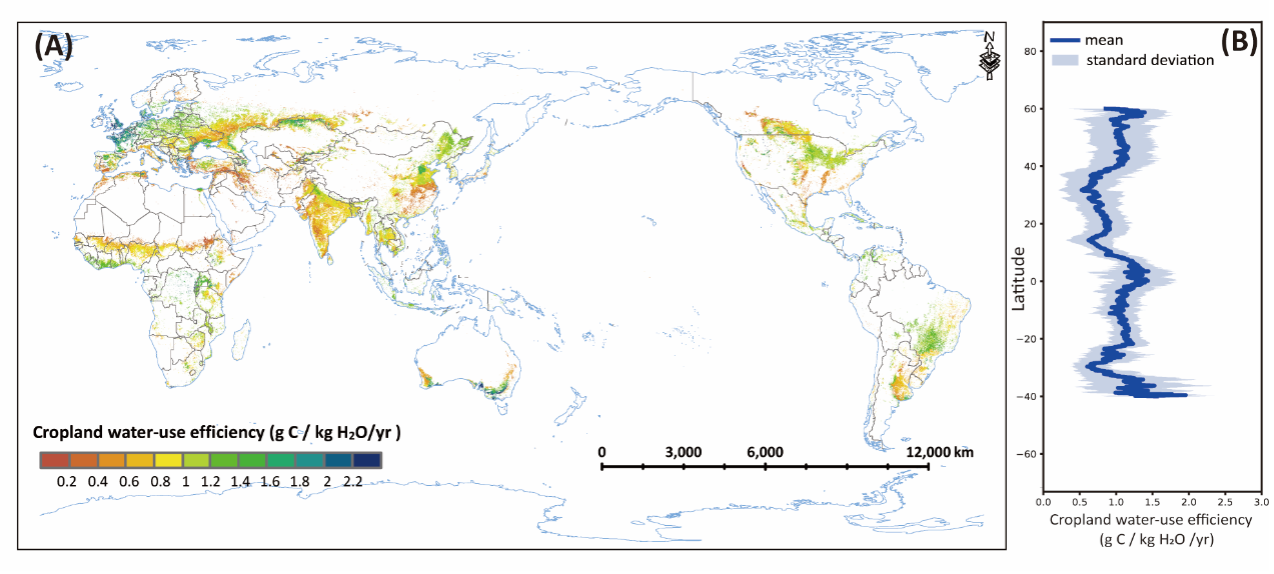New Global 1-km Dataset Tracks Cropland Water-Use Efficiency from 2001 to 2020
A research team from the Aerospace Information Research Institute (AIR) of the Chinese Academy of Sciences (CAS) has released a long-term and high-resolution dataset that tracks global cropland water-use efficiency (WUE) from 2001 to 2020. Published in Scientific Data, the dataset offers annual WUE estimates for croplands worldwide at a 1-km spatial resolution. It is expected to become a valuable resource for promoting sustainable agricultural water management.
WUE refers to the amount of biomass or economic value produced per unit of water used. It reflects both biological and economic benefits, balancing input and output. Cropland WUE serves as a key indicator of the trade-off between food production and water consumption and plays an important role in guiding the sustainable use of regional agricultural water resources. Understanding how cropland WUE varies across different regions and over time can help researchers and policymakers to assess the impact of climate change, agricultural practices, and irrigation strategies on water resources and food production. "Agriculture accounts for over 90% of the world's consumptive freshwater use", said Dr. JIANG Min, the senior author of the study, "With increasing concerns about global water scarcity and food security, accurate assessment of cropland WUE is more important than ever."
To build the dataset, the research team developed an integrated modeling framework that combines an improved light-use efficiency (LUE) model for estimating gross primary production (GPP) and net primary production (NPP), and the ETMonitor evapotranspiration model for estimating water consumption. The framework is driven by consistent forcing data and accounting for the coupled relationship between carbon and water exchange processes.
To improve the accuracy of WUE estimation, model parameters were optimized for each climate zone. The resulting cropland WUE product demonstrated strong performance, with high correlation efficiency (0.76) and low root mean square error (0.5 g C/kg H2O/yr) compared with the ground measurements at flux towers. Compared to existing satellite-derived WUE products, such as MODIS and GLASS, this new dataset shows superior accuracy and reliability.
In 2023, the dataset was presented to the 77th session of the United Nations (UN) General Assembly as one of seven Global Water Resources Data Products to support the assessment of the progress towards the UN Sustainable Development Goals (SDGs).
The dataset is publicly available on the CASEarth Data Sharing and Service Portal.
This work was supported by the projects funded by the Open Research Program of the International Research Center of Big Data for Sustainable Development Goals (Grant No. CBAS2023ORP05) and the Key Collaborative Research Program of the Alliance of International Science Organizations (Grant No. ANSOCR-KP-2022–02).

Spatial pattern (A) and latitudinal profile (B) of global mean annual cropland water-use efficiency. (Image by AIR)



News & Events